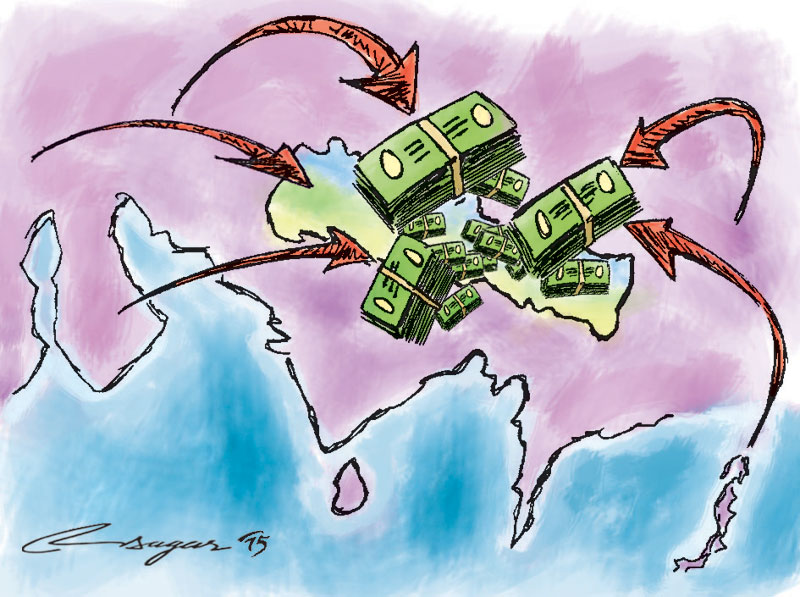Most remittance recipient households save to buy assets
Majority of remittance recipient households use the savings from the remittance money to purchase land and houses, says a recent survey commissioned by Nepal Rastra Bank (NRB).
The survey conducted among 320 remittance recipient households of 16 districts covering all five development regions shows that 66.6 per cent of the households save the remittance money in some form. Similarly, 33.4 per cent of the households use the remittance money for consumption and to repay loans.
The study titled ‘Saving and Investment Trend of Remittance Recipient Households’ commissioned by NRB shows that 66.6 per cent households or 213 families, who save remittance money use their savings to buy land and houses. Around half or 48.8 per cent of the households that save said that they will use their savings to build a house.
Likewise, 34.3 per cent of the total households included in the survey mentioned that they will utilise their savings for the education and health of their children and family members in the future.
As per the survey, a migrant worker sends remittance 6.2 times in a year and 90.9 per cent use formal channels, 5.9 per cent use hundi and the remaining send money through relatives and friends who are working with them in the labour destination.
Hundi is massively used to send money from South Korea. As per the survey, 70 per cent migrant workers in Korea use hundi to send remittance. In contrast, 96.2 per cent migrants from Gulf countries send remittance through formal channels, and only 1.1 per cent use hundi, 2.2 per cent use both hundi and formal channels and 0.2 per cent send money through relatives and friends.
The survey was carried out in Jhapa, Sunsari, Tehrathum and Khotang districts of eastern development region; Dhanusha, Kathmandu and Chitwan districts of central development region; Kaski, Lamjung, Gorkha and Rupandehi districts of western development region; Dang and Kalikot directs of mid-western development region; and Bajura, Kailali and Baitadi districts of far-western region.
In the survey, 44.7 per cent of the total households were found to be associated with agriculture profession and remaining were engaged in other jobs. During the survey, 80.8 per cent of the families said that other income sources were insufficient to cover their household expenses and 18.8 per cent of the total households were totally dependent on the income of the migrant worker, meaning remittance.
Around half of the families were led by women as the male members of the family had opted for jobs overseas. Among the 320 households included in the survey, 64.1 per cent have bank accounts. In rural areas, many households were found to be depositing their savings in either cooperatives or in informal groups, the survey says.
Even as national savings in gross domestic product (GDP) stands at 46 per cent, remittance recipient households are able to save only 28 per cent of remittance they receive, as per survey.
“The major reason for low saving is that the remittance recipient households do not have diversified income source, while high inflation, lack of presence of banks and financial institutions in rural areas, among other factors exacerbate the problem.”
Nepal ranked in the 23rd position in terms of remittance amount with total $6.6 billion remittance inflow in 2015, according to the World Bank. In terms of per cent of GDP, the country ranked in the third position after Tajikistan and Kyrgyz Republic as it received remittance equivalent to 29.2 per cent of GDP.
As per survey, the base of remittance can be increased by channelising the remittance inflow through formal channels and sending skilled and professional (high-end) migrant workers to the labour destinations. It has also suggested diversifying labour destinations, which has been concentrated in Gulf Cooperation Council countries since long.
According to data of some two years back obtained from Department of Foreign Employment, 73.67 per cent of the migrant workers are unskilled, 11.96 are semi-skilled, 14.34 are skilled and 0.02 per cent are professionals.






